
|
| Accept Cookies | Customize | Refuse Cookies |
Simone O. www.juzaphoto.com/p/SimoneO.  |
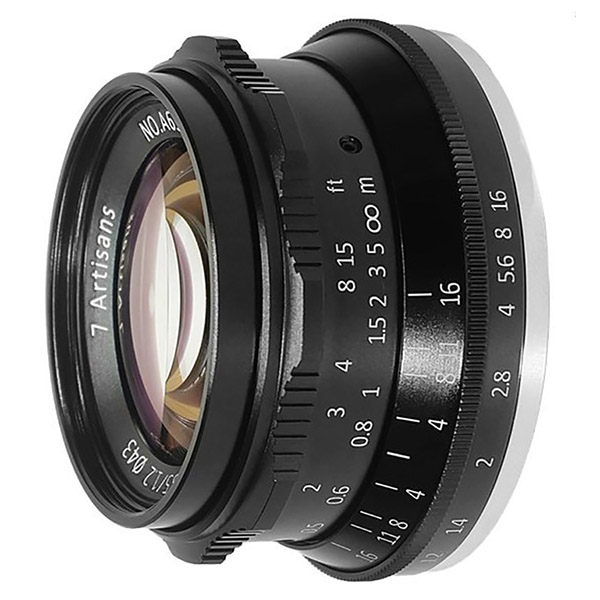 | 7artisans 35mm f/1.2 Pros: Great opening for an affordable price. Very small footprint. Good sharpness even at full opening (although it is difficult, even with Focus Peaking, to focus in the plane where you want...). Pleasant construction, high quality for its price, and robust looking. Cons: No chips (it does not transmit LF, f, but above all does not allow the correction of aberrations in the Canon DPP software). Unbearable and asymmetrical vignette for t & t & 1/1000 (only on EOS M100, probably shutter defect). "Glows" around the contours and/or purple fringes, under sunlight and at f Opinion: After trying it in various light conditions, I can say that it is a valuable lens for value for money, but with a number of defects that narrow the possibilities, which make IMPEGNATIVA to use and therefore inadvisable to beginners. The following refers to the version for EOS-M, particularly tested on M100 where it suffers from the most serious problem. It is possible (see the examples on the net) that defects vary depending on the version (Fuji, etc.) Wanting to sum it up, this vintage-designed, well-built, rugged-looking little "jewel" is great for interior scenes, in the shade, with diffuse or night time light (see some examples below Jeanpierre), while falling miserably under direct, front or side sunlight. In short, wanting to get a decent image, it is a f/1.2 "castrated", because in many conditions you have to close it at least from f/4.5 (about). In fact, I have found two important aberrations, which are presented only with FORTE sunlight, and to MEDIO-GRANDI openings (f - 4.5, then for very short shooting times) that in my opinion make the image practically to be trashed: - A very strong vignette, not to be believed, and also asymmetrical (covers the two upper corners of horizontal frames), for times 2/1000". This defect is very strange and still inexplicable to me. It does not appear in Live View view, and is not reported for EOS M50. I'm afraid it depends on the mechanical shutter of the M100 (lower end). The vignette seems to be actually an area of underexposure caused by an imperfect movement of the shutter curtain, which is NOT the case with Canon optics even at 1/4000". It is present, although less strong, even with the older brother 55mm f1.4. You can miraculously compensate with the Graduated Filter feature in RawTherapee, adjusting it very carefully. - "glow" color aberrations on the contours, as if objects or people were emitting their own, horrible light. These aberrations could be corrected in RAW post-production, but neither Canon DPP nor RawTherapee (to Jan 2020) have the necessary correction data, being a niche lens and chip-free. In short, be careful to use this more open optics of f/4.5 if you are in the sun, or you are in serious danger of throwing the shot. If like me you have an M100, you are damned, and you have to keep under the times of 1/1000 always and anyway in order not to spoil the shots with that strange vignette (to consider buying cheap ND filters). A decent fix, not to throw the shot, as said you can get with rawTherapee's Graduated Filter feature (which, if well set, lightens a selective region of the image, and also works on JPG). Another minor defect of optics is the yield of areas just out of focus, where the bokeh has a "nervous" or "kneaded" appearance. Be careful to use it open in scenes very rich in details. The images it returns, when used in the limits above, are beautiful and with a vintage touch. The colors are maybe a little reddish, but just correct the RAW. In conclusion, even being totally manual, I recommend it only to experienced amateurs and if you find it used (very rare, to me it happened right on Juza). Find a good place in a light mirrorless set (I accompany him to 15-45 Canon), for portraits set on the go or street scenes that can be filmed calmly. Otherwise, for 180 euros new I do not know if I would recommend it, especially combined with the M100. Overall, considering that it's an f1.2 to 180 pounds, I feel like I'm getting to grade 8. At a wedding I brought only this and it gave me great satisfaction. (Note: In order to shoot with this lens, depending on the camera model you may need to set to "yes" "Shutter release without connected lens", since it is a chipless lens.) sent on July 28, 2019 |
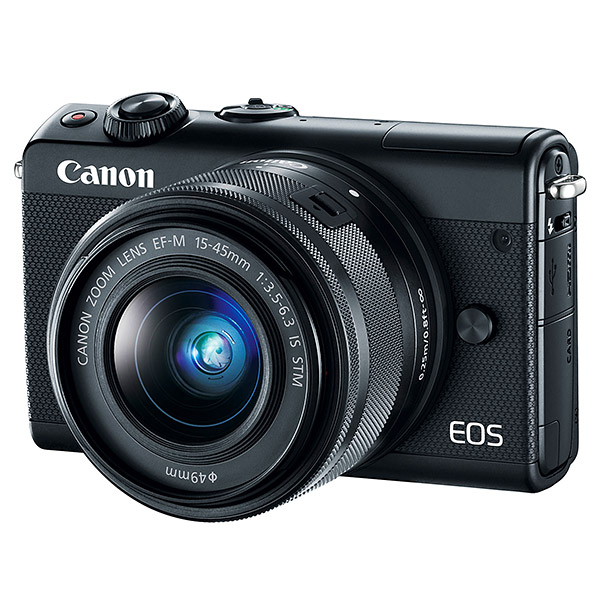 | Canon EOS M100 Pros: Great sensor, naturalness of tones and colors despite the 24 mp. 14-bit RAW file. Responsive when turned on, in commands, and viewing images/videos (great processor). AF very fast and reliable. Good Raw processing software (Canon DPP), despite the tremendous slow export to JPG. The automatic correction of shadows in the room, reversible ("Automatic Light Optimization") is very convenient. Presence of the built-in internal flash (finished the era when I always forgot it at home). Cons: Very cheap construction. Touch screen not selective on the fingers: it is also activated by the shirt as carried around the neck, with important consequences (random change of parameters, taking unnecessary photos). Opening of the sD jerk compartment (you have to lift the screen! I missed 30 min at the beginning). Lack of some advanced settings (present on Olympus PEN). Lack of stabilization on the sensor (Olympus strength). Range of native optics with AF (Canon EF-M) very lacking, only now you are launching Sigma with a 90mm eq., among others, that was absolutely missing. Opinion: Taken in place of the old Olympus E-PL3, attracted by the larger sensor and with apparent excellent value for money. Confirmed. The low cost of the kit (which also has a very good optics, see my review of 15-45) involves only a very basic construction, lower than the PEN of Olympus, with "plastic" everywhere, very essential finishes and feeling of little solidity; The USB cable is also not provided. For the rest, the M100 has great potential, I think, despite its small size. Small but "badass." The shades of color and dynamic range do not seem too far from my Nikon FF D600 (although the difference remains clearly visible); this is confirmed by DxO tests. The noise seal is very good up to about 3200 ISO. The machine turns on silently and is ready to shoot in only 1s, which I really appreciated compared to the E-PL3. The settings, tab writing of 14-bit RAW, zooming and scrolling images are very fluid. You must use touch to select P/A/S/M modes or the focus area. I have to mention here an important flaw of this: it is activated from virtually any surface (I think it is sensitive to pressure and not capacitive), so bringing the machine around the neck, ready to shoot, is the end! Fortunately, you have the essential setting, "Automatic touch screen lock", to be set absolutely to 3 s if like me you turn with the car on and ready not to miss the moment. It should be noted again, among the pros: the AF with an innovative phase detection technology ("Dual Pixel") and non-contrast, which makes it much more difficult to miss the point of fire, and the AF almost always accurate even in conditions of little light (except, automatic detection of the faces does not work very well, sometimes focuses on the waist, backwards). The matrix display almost always retains the highlights underexposing the shadows, wise choice for recovery. Among the shortcomings, however, I would have liked a few more settings: for example: - The ability to allow the shot in an AF way even when the AF fails ("shutter priority"), serious if it were not that the M100's AF is great - The ability to specify a maximum laying time in Av mode (fixed at 1/60" unless you reach ISO max) - The ability to set a color space for JPEG other than sRGB (it is done only via software and on RAW) - There are two buttons of type "Fn" (REC and asterisk), but with very few functions setbi As I rate 8, because the sensor is great for the category and price of the kit as well, but there are some shortcomings in the design (see Cons). However you get used to it early, and I recommend it a lot, to combine portability and quality along with the 15-45mm and 1-2 fixed optics. I would add that it seems to me "semi-tropicalized": I used it, a little recklessly, with 15-45 to resume an event under an insistent English drizzle, for a good half hour, and so far it seems to have held up very well despite the lens and the upper side of the body were just wet. sent on July 15, 2019 |
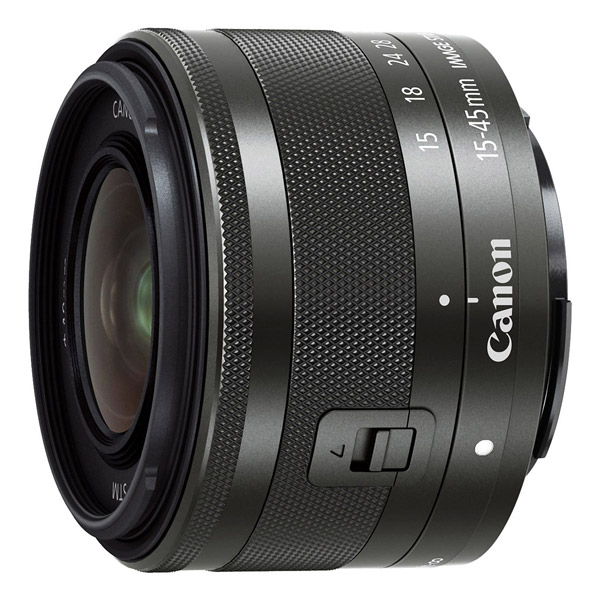 | Canon EF-M 15-45mm f/3.5-6.3 IS STM Pros: Compact and light, pleasant to carry (cluttered little more than a pancake when it is pictured). Sharp in the middle, good sharpness at half-distance. Distortion reduced to all LF (amazing for such a small lens). AF very fast and usually accurate. 24 (25) mm equivalents available in a kit lens (rare fact!) Cons: Severe decay of sharpness at the edges, whether used at full opening or just under. Important violet color aberration. Opinion: Great lens kit, offers much more than it costs. As the days went by to try it on my M100, I thought about him again. At first I was crushed by the kneading of the edges, and I immediately thought to discard it. Over time, however, I realized its many merits. The edges are scarce at all LF (especially around 15 mm) but only at full opening or little more. Closed by about 1 stop becomes acceptable even at the edges, and almost excessively sharp in the center. To get a uniform image from the center to the periphery, you need to close more (but I must note that the Digital Goal Optimizer feature of the Canon DPP software does its dirty work in compensating for sharpness at the edges, great). On the edges of the objects there are strong violet bands in strong light situations, as is typical of all kit lenses, but the correction in the camera or in RAW is great, removes them entirely. The flaws end here! The construction is good although made of plastic (right the cap is big and low quality). The fact that it has to be stretched (unlocked) in order to use it even at 15 mm I do not see it as a defect, the movement takes only 1 second and you gain a lot in transportability. I was impressed by the reduced distortion at all focal lengths (which is always barrel and drops from 15 to 45 mm): by comparison the excellent Nikon 24-120 f4, for example, is horrible. I don't feel the need to fix it in software. In backlight situations I seem to resist well the flare, even without lampshade (optional). The AF is fast and reliable thanks to Canon's Dual Pixel mechanism, if it makes a mistake it does so little (it's not foolproof, but you can forgive it for this range of optics). The stabilizer is good, not impressive, for example by holding the car still you can shoot without the slightest move at 31 mm (eq. 50 mm) at 1/4", recovering 3.5 stops as stated in the datasheet (and this is a HUGE advantage in night photos or with little light , compared to the "best" 22 mm pancake not stabilized, which should be opened from f5.6 to f1.8 to shoot with the same ISO!). Finally, it should be noted that the equivalent LF of 24 mm (for comparison, it seems more like a 25 mm) is usually available only in pro or fixed lenses, so it is an honorable mention (the 15 mm should be used NOT at full opening). In conclusion, a kit lens with very interesting characteristics, and that even an experienced amateur like me is brought to maintain, instead of replacing it with a pair of fixed optics (as I did instead on the Olympus PEN for the 14-42mm II R, which at the same price does not hold comparison on nothing). Vote 9, since it is a good optics but practically given along with the machine body (otherwise I would give 8). I would be curious to try the older EF-M 18-55 to see if it is sharper at the edges, but from different reviews on the net I read that they are virtually identical, and at this point, although very dark from 35 to 45, I think to hold the 15-45. However, many American reviews have shown a wide variability in the performance of both obese kits (1/2 of "bad" copies and 1/2 of "good"); I was afraid at first that mine was "bad", but canon assistance does not seem to detect anomalies from the photos I sent them, and on the European market are not reported faulty copies (kit bought new in physical store). sent on July 15, 2019 |
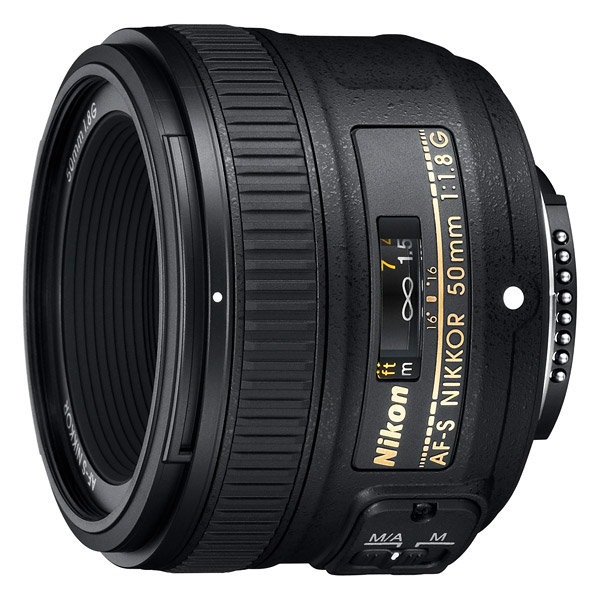 | Nikon AF-S 50mm f/1.8 G Pros: High quality/price ratio, light weight, fast AF, very sharp already f/2, little vignetting. Cons: Noticeable barrel distortion (automatically corrected with software effectiveness). Risk of back-focusing! Focus not very precise and repeatable. Lack of stabilizer, makes you want to use the excellent zoom 24-120mm If you do not need low PdC (f/1.8-3.5). Minimum opening F/16 (F/22 on 24-120mm). Opinion: At the beginning, this "must have" of Nikonisti did not make me fall in love: I was disappointed by the barrel distortion, not horrible but very visible (on FX) when the photo has straight elements, approaching the one on the wide angle of the 24-120mm F4. The software or the firmware of the camera correct it well (I recommend to set "auto distortion Control" in the menu), but it bothers to see it in a fixed and not even wide angle, forcing to sacrifice side details of the shot, visible instead in the viewfinder . Of course, it should be considered the very low cost of optics, the fact that the use on FX (on DX the distortion would be barely perceptible), and that is a small and light optics and with few lenses, as opposed to the 24-120mm that does not distort to 50mm. On top of that, I happened to have a copy (socket used in the store) with a heavy back-focusing, which I corrected in the camera, after several tests, with a fine adjustment offset AF of-20 (the maximum! I almost went to protest in the shop. Also check your, which focuses exactly in the AF point and not in front or back. Calibrated the AF, I recognized that this little one is discreetly sharp to f 1.8, and very sharp already from F2! At F4 it is cesellante, and also sharper (as you would hope) of the already excellent zoom 24-120mm @ 50mm. The sharpness at times however depends on the accuracy of the MAF, which does not seem great. The sharpness, then, does not seem to worsen much with the distance of the center of the frame. Unfortunately, not being stabilized you can not absolutely fall under 1/50 "freehand to avoid the blur, and still up to 1/80" you have to be careful. The vignetting is present but very light even on FX. The AF motor is the same as the 24-120, not very fast but quick and acceptable almost always. In conclusion, this little one gives me the impression of being built for the DX format, not much for the FX, with which it is also compatible and where it gives a very important LF. However, with a little bit of attention, and automatic distortion and vignetting corrections, it can also be valuable on FX. Precious, in my opinion, only to have the blurred of the F 1.8-3.5 and to lighten the weight in case of light outputs at only 50mm, because as a total yield does not seem to me that the 24-120 F4 has much to envy, rather has the magic of the stabilizer. But sometimes the 50ino is used willingly. Final Vote 8, maybe it would be 8.5 for me, for the price to which it is located. sent on January 01, 2019 |
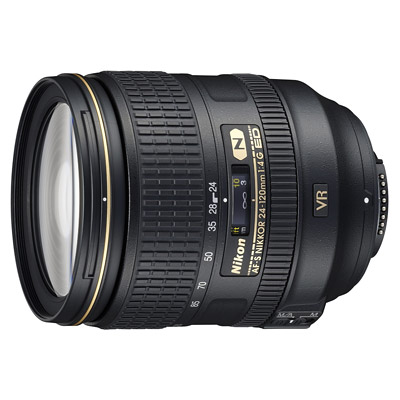 | Nikon AF-S 24-120mm f/4 G ED VR Pros: Very high quality handyman given the low weight and focal excursion it offers. Seen on the contrary: exceptional focal excursion for the quality it offers. Cons: Distortion in a wide focal range (24-32mm: barrel, or "fisheye" effect - 32-85mm: bearing, that is, the lines that should be straight flex towards the center of the frame, evident for the sea line, but invisible in street scenes, nature, portraits etc.). It can still be corrected in post-production. Similarly, it applies to vignette, which is quite visible in both wide-angle and wide-angle canvases with wide diaphragms. Loss of sharpness and glows at 100-120mm per distant focus (I didn't test every single opening, but I match several of the most common). Paraluce with a jerk mount, sometimes it gets stuck and wastes time dismantling it and reassembling it. Opinion: It's a lens that you can't not have, especially if you bring the SLR on the road, indeed you could bring only this (in fact it is my first in the Nikon FF system). 24-120mm is a focal range from which you rarely feel the need to get out, while from 24-70mm much more often. So I didn't think for a moment to save for the 24-70mm f2.8 (also because of the weight and size). The opening of f4 is enough to detach the subject in most cases (especially for me coming from the m4/3...). And this wide focal range sacrifices little in terms of quality. The optics gives photos with excellent sharpness (not razor blade, but almost) to all LFs, it seems to me, when the subject is close enough, while doing so so, but acceptably, when the subjects are far from the camera. The flare resistance seems great to me. The AF is fast enough, so far I have never wanted more readiness, and when it declares subject to fire it never makes mistakes. The stabilizer is exceptional, almost at the level of the 5 axes on the Olympus: being careful to keep the car still I shot well even at 120mm and 1/20". The construction is very good, not gorgeous but pleasant (sin for the lampshade that is sometimes mounted with difficulty). In short, the value for money is very high, since the lens begins to be a little dated and you find a lot of used them. Too bad for the only big mole, but understandable given the size, weight and price of the not so high lens: the distortion. I have only noticed it during the months of use of this optics. It is true that it is correctable in posts (if taken in RAW, although not always, in my opinion, the Nikon software "gets right"; if instead taken in JPEG, when taken by the sea or wide-angle it is better to select "Car distortion control" in the shooting menu). But it's annoying to see her continuously in virgin RAPs, and to sacrifice details at the edges of the frame by applying the correction. Sometimes it makes me want to replace the 24-120 with some fixed, although (as others have noticed) in many situations zooming is indispensable or going crazy. Everything you can't have. At this point, I wonder if the 24-70 f2.8 is better for distortion since it is "bigger" in all senses... Overall rating 9, because it is true there is distortion, but it is a bright lens, with very wide focal range and quality that is maintained from 24 mm to 120 mm, with exceptional stabilizer, and in my opinion a very great value for money. A lens so handy not found in other photo houses, at most there is 24-105. sent on January 22, 2018 |
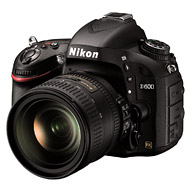 | Nikon D600 Pros: Exceptional construction. All the customizations you could wish for. Built-in flash Great file quality, another world compared to the 4/3 sensor. Cons: Imprectable automatic exposure meter with scenes of high contrast (overexposed even 1 EV!) RnThe AF illuminator does not seem to work at low temperatures (0 ° C) .rnWARNING: the original shutter of the D600 is badly managed, the sensor will soon get dirty with oil . At the time of purchase make sure that it has been replaced or that you can do it for free in assistance (mount the one of the D610, exit just to cover this defect). Opinion: After 7 years of Olympus (first E-620 and then E-M1 I), and after long searches and hesitations, I enter into the Nikon FF system with the D600, which I chose for the best quality / price ratio at the moment, to pact to buy it used and with the replaced shutter (same as the D610). SO THEREFORE A COMPARISON BETWEEN THE TWO SYSTEMS. Already after making some comparative shots between D600 + 24-120mm f4 and E-M1 + 12-40mm f2.8, I realized that I would never come back. Who cares a bit 'of encumbrance and weight more (but not so much, compared to the E-m1 + 12-40! I was surprised) and to have the stabilizer within the lenses and not within the body. Shooting with a Nikon FF seems to me like removing a veil from things. The wealth of detail, color, shades recoverable from the RAW in post-production has no comparison with the E-M1, which was exceptional even though it had a sensor of 1/4 area. In addition, the Nikon colors have something magical for me (I tried the Sony A7 II, always FF, and I did not like it at all). Of the E-M1 thinkingI no longer regret anything. Maybe it has a slightly better seal at high ISO equivalents (eg 1600 vs 6400 on FF), but with the same filtering, even if there is less noise the detail is lower, in the sense that a file of the D600 zoomed looks like a window, and that of the E-M1 an oil painting, everything is a bit '"smeared". The stabilizer in the body is the real gem of the m4 / 3 system, but having taken the Nikkor 24-120mm f4 I must say that, thanks also to the heavier and therefore more stable body, the vibration resistance is practically at the level of E-M1 (I can even shoot at 1/20 "at 120mm! Just pay attention.) Of course, go around the city with a D600, as with a D850 or a Canon 5D, gives a little 'more in the eye compared to E -M1, but I do not mind showing a photographer's status even if I do not do it for work.And anyway I always keep a small Olympus E-PL3.Then handling the D600 and seeing the thickness of its manual, it is%3B incredible to say but the E-M1 in comparison looks like a toy. Already she had excellent ergonomics, the position of the dials, menu ... but the D600 I like it for usability even more. From the details you understand that it is a much more professional object of the E-M1 (at least, the first version). It does not come off paint, the rubber is of superior quality, the most fluid dial nuts and regulate instantly (small delay on the E-M1), the delay to start at almost non-existent (1/2 s on the E-M1), the customizations (even on car ISO) are many more, the battery lasts longer and you can insert 2 cards. In short, all added value that I did not expect. It has the built-in flash, less performing than the mountable E-M1 but it is a convenience to have it ready immediately and not always forget it at home. Finally, even the proprietary software is infinitely better than Olympus: the available fixes are many more, it is faster and does not go into crash. For me that I do not like Lightroom this is a great thing. As for the D600 itself, I find it exceptional. An object that is a pleasure to hold in your hand (especially if it's as big as mine). I can not make comparisons with other FF bodies yet. I was worried by the judgments that the AF was poor with little light. Well I tell you that it is slightly more accurate than on the same E-M1 plus the 12-40 (we "see" a little better in dim light, and fewer times the hooking fails). For me it is enough, so to speak at night in the city you shoot well. I would not justify the price jump with the D750 (my first choice). If you do not need discretion at the limit there is the AF illuminator. The only negative note of the D600 that I must recognize is that the automatic Matrix light meter is a bit 'inaccurate when there is high contrast (better was that of Olympus). In these cases, under-specs of -0.3 or -0.7 for safety, or you risk burning a lot of detail. However, patience, a littleIn the end, I would recommend to anyone who has reached a certain degree of maturity in photographic technique, and appreciates the dynamic range, colors and detail, and does not suffer tremendously the weight of the equipment, to make the transition inverse to what many do: mirrorless m4 / 3 or APS-C to Nikon full-frame reflex. sent on January 22, 2018 |
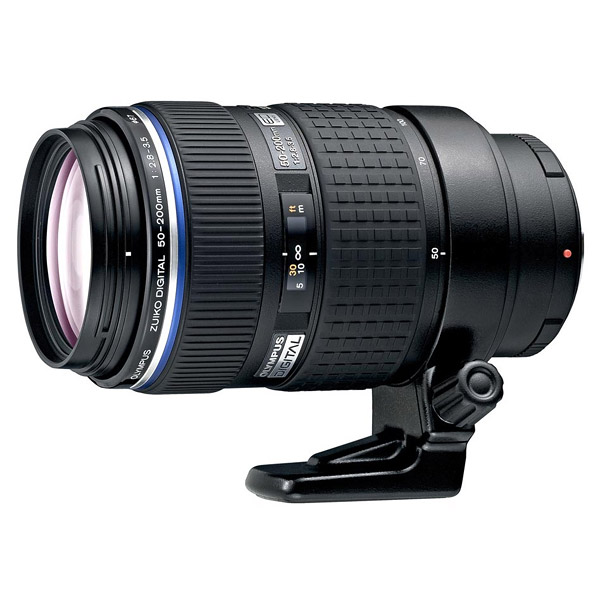 | Olympus Zuiko Digital ED 50-200mm f/2.8-3.5 SWD Pros: AF fast and silent, professional image quality, not heavy for what it offers. Lens hood, case with strap and tripod included Cons: Nobody. Caution: The AF works at maximum of its potential only on 4/3 (old bayonet) or E-M1 (I or II) batteries with adapter. On other bodies m4 / 3, the AF performance (which is not verified and model dependent) is due to the lack of the focus algorithm that uses this lens, whose AF is then directed more slowly. Opinion: Do not make it distracting from being an old-fashioned lens that requires an adapter: buying it is a bargain. The 50-200 SWD is an exceptional lens also on m4 / 3. Of course, if you do not have an E-M1, the only model that (in the first and second versions) has maintained the focus mechanism typical of the old 4/3 system, the AF might be a bit slow (I do not have it tried in person) and to limit the manual to focus peaking - it also helps greatly the fact that the MF is permanently available by turning the ring on the barrel without having to activate it in the menu or move levers. rnAmong this, the lens offers outstanding image quality, comparable to that of the excellent 12-40mm PRO as to sharpness, color, and resistance to defects. The AF on the E-M1 is very quick, accurate and silent (sometimes, if it is "useless", it is almost instantaneous). It is sufficiently open for portrait needs, at least bythe 80mm, where I rarely wanted more blurry. From 50 to 70mm maybe is more suitable for group photos or portrait busts.rnrn The construction is great and makes a nice impression to keep it in hand. It's not very heavy for what it offers. In conclusion, a professional or almost objective, well adapted to portraiture, weddings, and, coupled with the E-M1, to sports or shooting fast moving objects. I voted for 10, I really can not find fault with them (right, it would be nice a little brighter) .rn sent on October 20, 2017 |
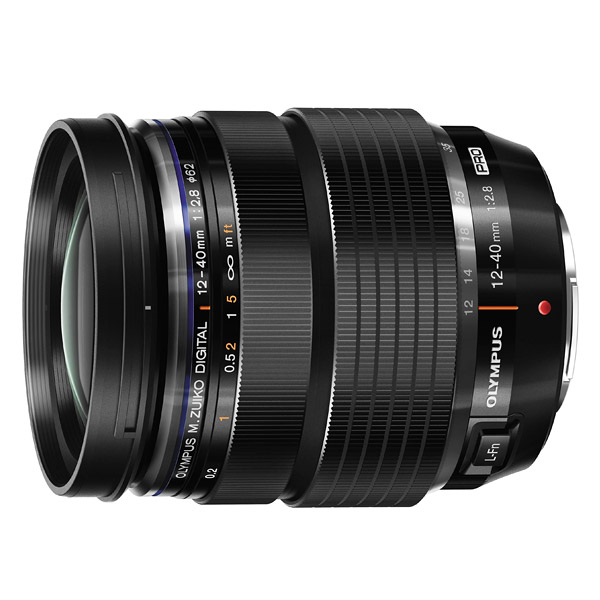 | Olympus M.Zuiko Digital ED 12-40mm f/2.8 PRO Pros: Solid, lightweight, lightning-fast AF, excellent picture quality, allows macro shooting! Cons: In backlight or lateral light at times it shows a phenomenon of intense and unbearable flare, even with mounted louver (see below). With low light the AF drops a bit of performance Opinion: So much for the hat of the Olympus engineers. At a price not so high they have built a jewel, robust, versatile and outstanding image quality. Unfortunately, he also has a heel of Achilles (see bottom), but it's a bit small compared to what makes this lens possible. RnrnThe construction is great, the lens is elegant and gives a sense of professionalism. It's lightweight (important for a very common use lens) for what it offers and to hold 14 lenses. The shots appear very sharp, with pleasant and well degrading colors. Excellent resistance to defects (diffraction, astigmatism, purple fringing), except flare (see below). While it's really lightning (in addition to my needs) in daylight, the AF is a bit in trouble in low light conditions, sometimes repeatedly missing the subject, and generally gets a little slower. Its performance remains acceptable. Advice to fix the problemto use, whenever possible, the AF illuminator 2 mm in width over the wide angle compared to the 14mm classic can not be underestimated, they really broaden the field angle, allowing you to shoot very large scenes (certainly not super wide-angle, but enough for traveling and indoor photography). A 40 mm aperture of f2.8 allows you to get good portraits, discreetly detaching the subject from the background (in many situations, especially with a bust, you would not want to be more blurred) .rnrnrnThe 12-40 PRO then allows an enlargement of the Objects from 0.3x to 40mm (fills almost the frame with one eye), which made me sell my macro lens without regret, even because it's nice to be able to shoot macros with a general purpose lens without having to carry it behind a special one. rnrnWe are the only fact I can really complain about this lens: I do not know if it is a defect in my version, but I noticed that in backlit scenes or lateral sunlight, it forms in the imaginationand a clear, multicolored flare, which seems to reproduce the layout of the internal lenses, difficult to remove in post-production. Sometimes it's so obvious that it looks like a real object, and it pushes me to delay the shot trying to recompose and eliminate it. Maybe you should try it with a longer hood (at least when you jump from 18mm up). I, unknowingly, think that it is the effect of multiple unwanted reflections, and a price to pay for the complex optical design (with 14 lenses) and able to maintain outstanding quality from 12 to 40mm, moreover with a 'constant opening of f2.8. Of course, it is a shame they have not been able to solve this defect ... (On the 4/3 zoom I used before and even on the small 14-42mm II R MSC the flare, if any, was much lighter and more bearable). This is fortunately a problem that annoys a small fraction of the shots that are typically done with this handy lens. Really, I can only recommend it, it is worth its full price, indeed more.rn sent on October 20, 2017 |
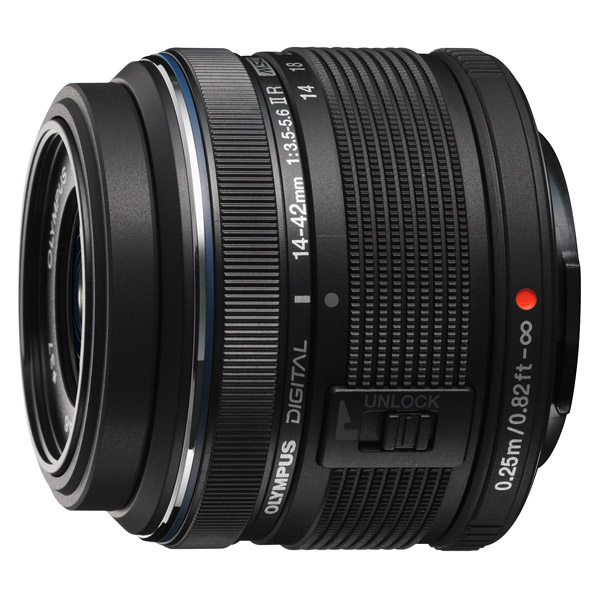 | Olympus M.Zuiko Digital 14-42mm f/3.5-5.6 II R Pros: Small, lightweight, lightning-fast AF, very sharp (but only in favorable light conditions!) Cons: Poor image quality (especially in challenging light scenes). It is uncomfortable that it is "retractable" (it must be extended with the same zoom movement as it is possible to shoot): if it is left unattended, it will risk losing the moment! Opinion: A goal of absolutely basic level, as soon as you gain more confidence with photography and the quality of an image, my advice is: libertevene.rnrnIn "standard" light conditions (open on sunny and sunny day, in the interior) it defends itself as image quality, but as it snaps into a bit more difficult (backlight, light, fog) it clearly shows that it is a entry-level goal. The main defects that I have encountered (during an evening out and a foggy evening in Milan) are the apparent presence of the diffraction effects already at f5.6 and / or an astigmatism that makes little or even double contours; the overall result is that the image is covered by a strange "patina" that significantly diminishes its clarity and beauty. rnrn I will only recommend it to those who have little budget and if you absolutely do not want to give up zooming.rn same price, much better for example the Sigma 19mm f2.8 Art (which I have also reviewed): it is worth sacrifice the focal length and AF speed (19mm has good but not lightning) to the benefit of better image quality and better of greater brightness (1 stop more at 19mm than 14-42). Fixed focal length also forces you to train the direction of the frame and perspective, so imagine before shooting, and recognizing interesting scenes. With 150 € or little more it will be coupled with the excellent M.Zuiko 45mm f1.8 (which lies abyss over the other two). If you have more budget turn to 12-40mm PRO which is exceptional (see my review). sent on October 20, 2017 |
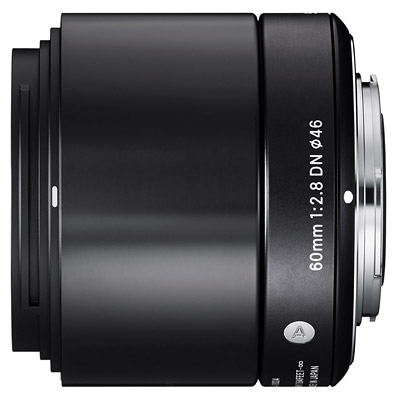 | Sigma 60mm f/2.8 DN Pros: Lightweight, good construction, beautiful colors, very clear, very focal length. Cons: AF not fast (but absolutely forgivable to a lens at this price). Opinion: I'm reviewing the Micro 4/3 version. Aim for the exceptional value for money, much better in my opinion than the 19mm ART brothers (which I also reviewed). Like this, it includes hood, it's a good and futuristic construction, and pleasing to the touch. Compared to this, it seems clearer, AF is similarly quicker but more reliable: it rarely completely blames the desired focal point. For reliability and accuracy (not unfortunately, for speed) it is comparable to me for the excellent M. Zuiko 45mm f1.8. The optical quality is remarkable, nothing relevant to criticize. I use the LF 60mm (which becomes 120mm on a full frame), it takes detailed scenes but without the perspective too compressed, as I think it seems 75mm with M. Zuiko , Even 5 times more expensive. In my opinion the lens is a great companion for the lightweight and versatile 19mm ART traveling. Like this, it has an internal floating element, so you do not have to worry when it sNoticed by the machine, it shows noises as something moving inside. sent on June 11, 2017 |
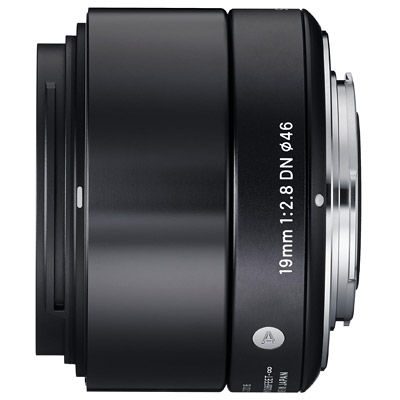 | Sigma 19mm f/2.8 DN Pros: Light, good construction, beautiful colors, very interesting focal length Cons: Barrel distortion evident in some situations (can be corrected in post-production). AF not really fast and bad at "guessing". Purple fringing Opinion: I review the Micro version 4/3. Discreet goal, worth its price. It is pleasant to the eye and to the touch, with a modern design, well looked after given the price, which even includes the lampshade. After using the Olympus 14-42 II R zoom kit I must say that, as I had hoped, the optical quality of the images (including the color rendering) is much higher. Unfortunately some weaknesses have it (almost acceptable given the price), in order of impact from my point of view: - Thanks to the fact that it is semi-grandangle, in some scenes you notice an annoying distortion of type "fisheye" or "barrel" (center of the frame reaching out to us). You can remove it in posts but sacrificing the corners of photos, which is often annoying. To be a fixed optics and not even very wide-angle, I expected less distortion. - The AF is not the quickest (but it is silent), and often does not conclude precisely. In this, the M. Zuiko are much superior. I recommend focusing in the center and recomposing. - The lens almost does not withstand the purple fringing at all. The focal length (19mm, which becomes 38mm on FF) is in my opinion a great passepartout, not too wide-angle but does not prevent the resumption of panoramas (such as the 25mm). I had to choose only one LF for travel, this one. In conclusion, I absolutely recommend it instead of the 14-42 in kit to improve the quality of your images, have more brightness and blurry (f2.8 vs. about f4 to 19mm), and train yourself to think better about the frame, being this a lens Fixed. I do not recommend it for professional needs, (maybe it still makes it better on E-M1, I have always used it on E-PL3). PS: It's built with a "floating" element, so it's not already broken if you shake it you feel something moving inside... :) sent on June 11, 2017 |
 JuzaPhoto contains affiliate links from Amazon and Ebay and JuzaPhoto earn a commission in case of purchase through affiliate links.
JuzaPhoto contains affiliate links from Amazon and Ebay and JuzaPhoto earn a commission in case of purchase through affiliate links.May Beauty Be Everywhere Around Me